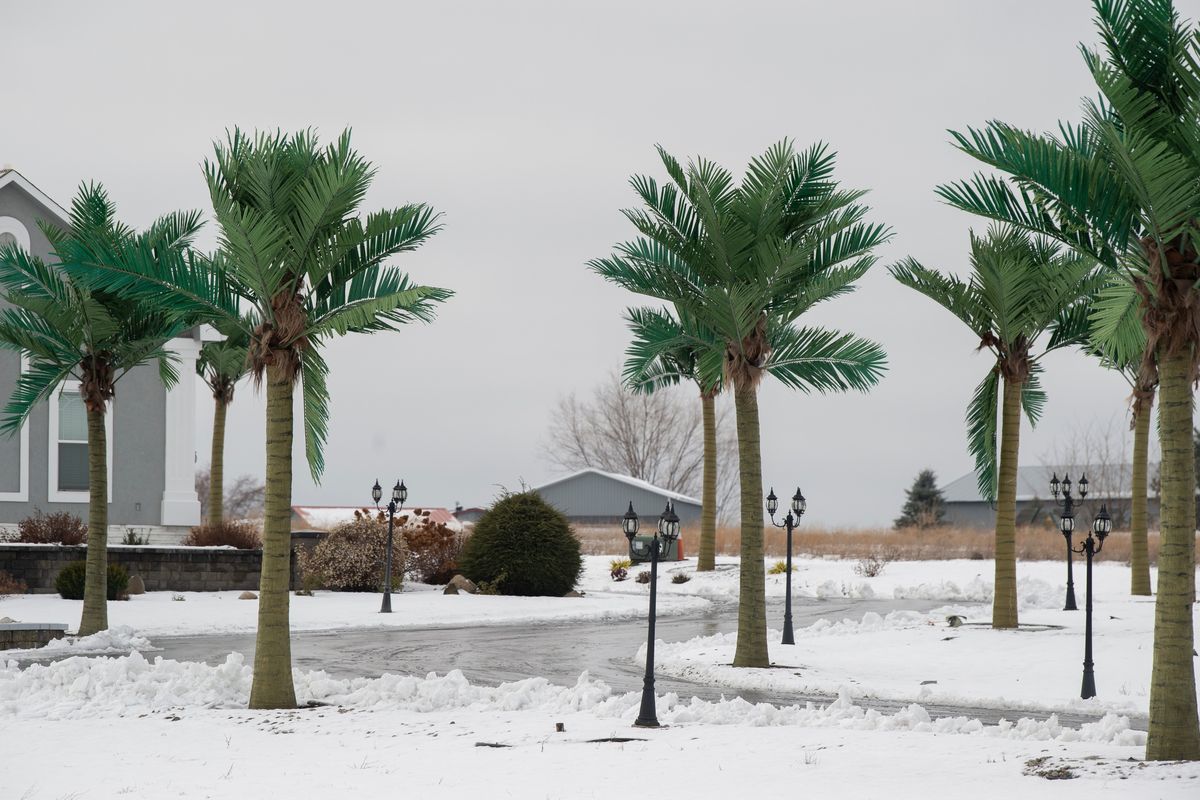Oh Christmas palm, Oh Christmas palm, how lovely are thy fronds

From staff reports
Snow fluttered across the Peone Prairie last week stoking the hopes of many for a white Christmas.
But something seemed amiss at one of the rural homes: a dozen or so towers of defiance. Or denial.
The “palm trees” on display are a way for homeowner Harbinder Singh to pay tribute to his memories of living in California.
They rise along his driveway and around his house offering a tropical flair during the summer and early fall.
By winter, people who might not be in the know have expressed some concern.
“We tell people about them … and not to worry,” Singh said. “They are fake. We ordered them.”
He said he appreciates knowing that his palms bring a smile or puzzlement as they drive past.
The palms are not decorated with Christmas lights like the tree in the famous commercial first aired 31 years ago by Corona Extra.
At least not this year.
“Maybe next year …” Singh said.
Before the pandemic, finding a collection of Christmas-lit palms in Spokane required a seasonal trip to the Geiser Conservatory in Manito Park. The caretakers would string 30,000 lights among the palms, cacti and tropical plants, turning the small building into a beacon for those who revel in lights. There were also hundreds of poinsettias and other Christmas decorations and ornaments.
Kelly Brown of the Friends of Manito, said in 2019 that the conservatory drew thousands of visitors from the city and surrounding communities during the holidays.
She told the The Spokesman-Review that once conservatory was illuminated with Christmas, “It’s like moths to light.”
The pandemic may have put a kibosh on the South Hill park’s tropical Christmas, but Manito replaced it with a less exotic drive-thru lights show, followed by a walking tour, that ended last week.
And that’s one of the truisms of living in the Northwest: Most palm trees just aren’t suited for the cold climate, according the U.S. Department of Agriculture.
That’s especially evident east of the Cascades and north of Interstate 90, where temperatures turn Washington into a tricky place for a palm tree.
There are several palms that have a chance in this part of Northwest, including the saw palmetto and the needle palm, hardy and bushy palm trees, not the whimsical palms of tropical-vacation dreaming.
The saw palmetto, native to Florida, can grow in places where the temperature can dip to zero. So they can be found along the coastline and even up into Alaska.
Needle palms, also called porcupine palms are native to the southeastern United States and are even tougher in cold climes, tolerating temps to 10 below zero.
The most popular palm in the state of Washington, where moderate temperatures can have some palm tree varieties thrive, is the windmill palm.
Palms Northwest, a specialty nursery in Auburn, is in the midst of its off-season, but recommends windmill palms for their thick appearance and hardiness, which includes surviving temperatures that can drop briefly into the single digits. The palms can handle some snow, too. It makes the windmill the most popular palm in the state.
But if tropical postcard palms with their slender trunks and bursting fan of leaves at top are on your holiday outdoor decor list, perhaps consider the fun and curiosity that has unfolded among the farm fields north of Spokane Valley.